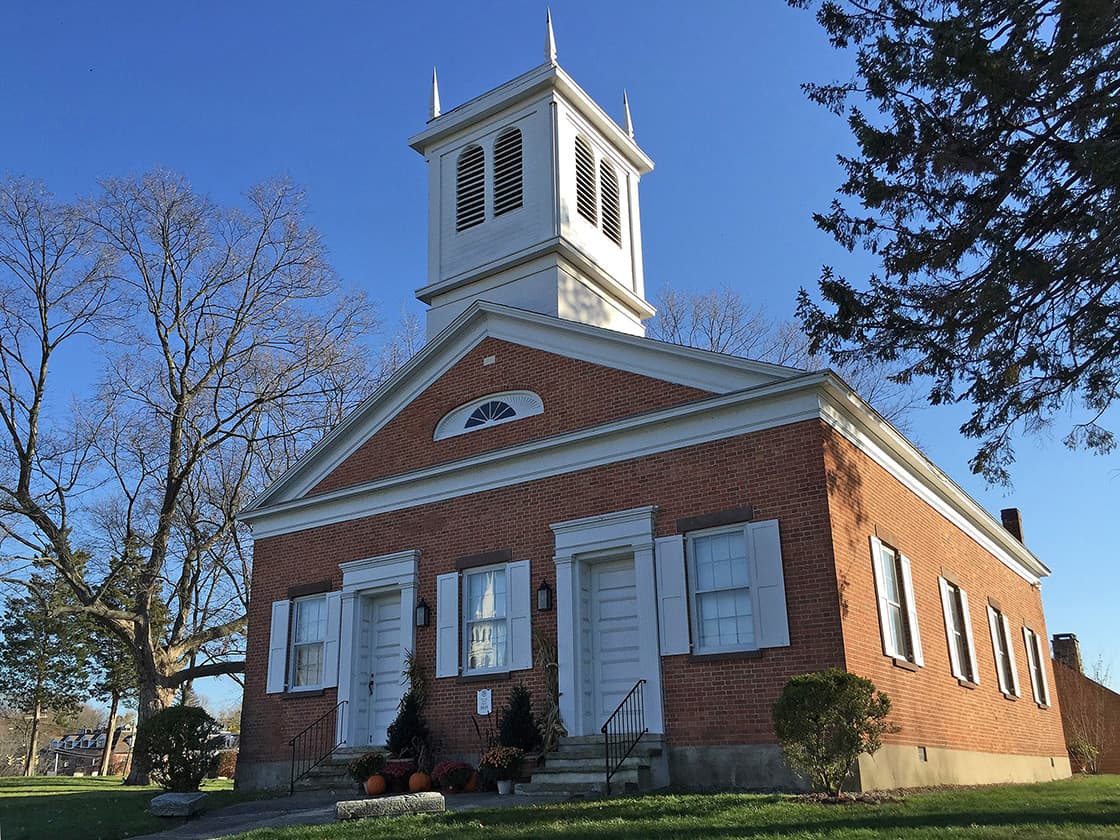Norwalk Town House
Norwalk’s Seat of Government
Built in 1746 on Mill Hill, Norwalk’s first townhouse was used for the sole purpose of conducting business. For the next 30 years, it served the town from its central location in the business district situated at the Head of the Harbor. Unfortunately, along with many other buildings, it was burned by General Tryon and his British troops during the Battle of Norwalk on July 11, 1779.
Following the British raid, a shortage of both materials and labor led to the slow rebuilding of the area surrounding the Green. Priority was placed on the construction of mills and homes, rather than on the public buildings that had been destroyed. It was not until almost a decade and a half later that a new townhouse was built.
According to many sources, the 1794 townhouse fell into disrepair in the early 19th century. Some reports suggest that it was such an eyesore that a group of anonymous local residents tore it down in the middle of the night. Town Proceedings and other municipal records, however, indicate that the removal of the old building occurred in an orderly fashion with the appropriate approvals. The town provided funding for a new townhouse to be built on the same site.
This new townhouse was built in 1835 and constructed in brick, rather than of wood. Lewis Raymond, Jr., the man responsible for its construction, used brick which had been brought to Norwalk as ship ballast. The new townhouse was the third building in Norwalk to be built of brick (all of which had been built by Lewis Raymond, Jr.).
Designed initially for both civic and political use, the Townhouse served as a home for several of the town’s institutions, including the Baptist Church between 1837 and 1840 and the African American Methodist during the mid-19th century. It was also the seat of Norwalk’s government until the 1913 consolidation of the City and Borough of Norwalk.
During the 1920s, the building was leased by the Daughters of the American Revolution, who added an addition at the rear of the building. This annex held a kitchen and bathroom. The building has been restored three times, the first of which happened in 1965 and was completed by Anthony F. Conte. During the second restoration – executed by Gidley Bros. and Ryan, Inc. – the cupola was fixed and the original 1871 bell reinstalled.
The building was once again repointed and refurbished in 2020-2022 and is now used for exhibits and public programs. Daryn Reyman-Lock, PhD
Dr. Daryn Reyman-Lock is a native of Connecticut. After graduating from Lehigh University with a B.S. in Geologic Sciences and a B.A. in Archaeology, she matriculated to the University of Nottingham in England to complete a Masters and Ph.D. in Archaeology. Her research is concerned with the social constructs of space and phenomenology.
Upon returning to the United States in 2012, she began working as a historic preservation specialist. Dr. Reyman-Lock often works closely with non-profits to curate exhibits, catalogue and move museum collections, and research historic landscapes and buildings. She also consults for municipalities on a variety of projects.















